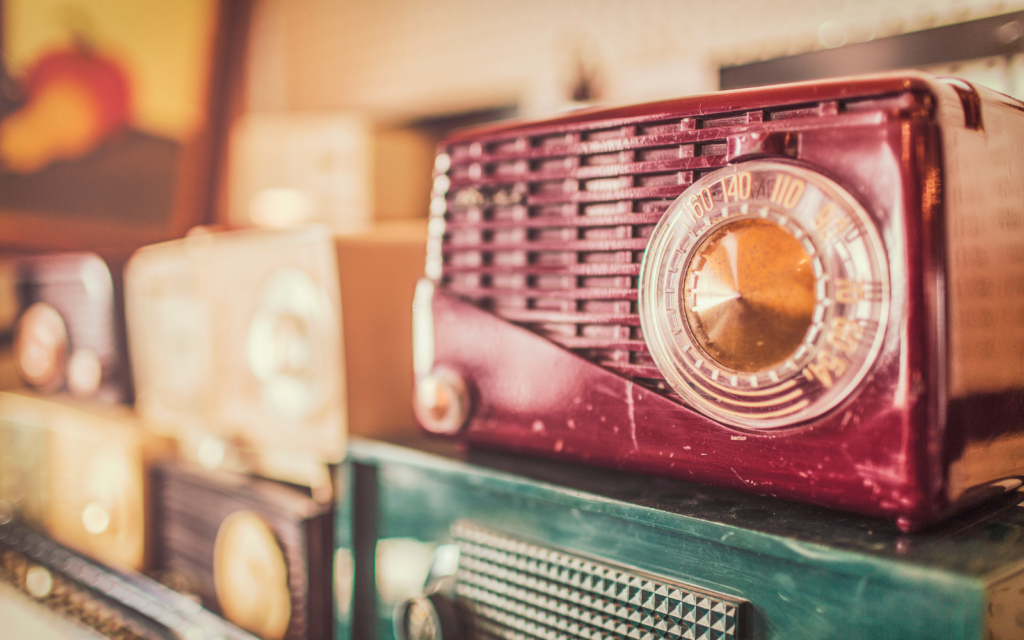Shortly before access to the BBC News website was reportedly blocked in Russia a few days ago, the BBC announced that it was resuming the broadcasting of the BBC World Service via shortwave radio for four hours per day. It said that this was to ensure that people in parts of Russia and Ukraine can access its news service.
You can listen for updates on the Russia-Ukraine war on BBC World Service live online 📱 https://t.co/ZpQiRUoNHP
And the map shows our shortwave radio reach in #Ukraine
📻 15735 kHz 16:00 – 18:00 GMT +2
📻 5875 kHz 22:00 – 00:00 GMT +2 pic.twitter.com/q1wa2o3j4g— BBC World Service (@bbcworldservice) March 2, 2022
In a world with near-ubiquitous adoption of mobile phones, the use of early 20th century radio technology might seem unusual. But it makes sense for a number of practical reasons.
Shortwave radio is an old variant of what many people may remember as “AM” analogue radio, operating on low frequency radio waves to deliver audio services. Shortwave radio is far simpler than modern digital TV or telecommunications services: receivers are widely available (or can be built from spare electrical parts), and it works across long distances.
Read more: How to write to your MP if you’re concerned about the crisis in Ukraine
Traditional broadcast TV and radio fundamentally differ from modern internet-based services. Like Freeview TV received over an aerial, traditional broadcast radio services don’t require you to transmit anything to be able to receive a service. It’s transmitted once, and anyone with a receiver can listen or watch.
When someone uses a shortwave radio receiver, there’s no lasting trace of them using it. This makes it hard for an occupying force to find those listening to (perhaps banned) overseas media.
Conversely, when you browse the internet or use a mobile app, your device is requesting the content you wish to receive, and it’s being sent directly to your phone. This bi-directional communication means that when you browse the internet, various entities like your internet provider are able to see that you visited certain websites.
Internet-based services can also become overloaded, either as a result of high demand, or due to malicious attacks flooding a service with requests, aiming to make it unavailable.
Read more: Radio has a rich history as a weapon of the liberation struggle in southern Africa
There are a number of other technical reasons why shortwave radio can be very useful in crisis situations. Since it uses lower transmission frequencies, the signals can travel much further than TV or mobile phone signals – thousands of kilometres, rather than kilometres or tens of kilometres.
This means the BBC can broadcast from outside into a conflict zone without needing local physical infrastructure. And since low frequencies are used, the signals propagate better through buildings and the environment. If you’ve ever experienced poor mobile phone signal in the centre of an old building, you’ve experienced the challenges of radio propagation. Low frequency signals reach into buildings and basements better, even when transmitted from far away, which might be useful for people who are taking shelter.
Shortwave radio receivers can also be very power efficient. You can run a portable radio for days on batteries, and many cars have a shortwave-capable radio in them, which can run from the car battery. There are even wind-up or solar-powered shortwave radio receivers available.
Though mobile phones can be charged from power banks, solar panels or car chargers, they require a lot of infrastructure, like radio masts, power and fibre network connections. Any of these could fail, or be deliberately targeted, taking down some or all of the network. If your local mast loses power, the network will go down in that area. If the core network sites are damaged or lose power, the whole network will become unavailable.
Further, mobile phones and other digital radio technologies are designed to use low transmission power to make it more cost effective for mobile operators to re-use the same frequencies in different areas. This means that the network operators reduce signal power wherever possible.
This makes it practical for almost anyone to attempt to jam and block access to mobile networks, using handheld jamming devices (which are generally illegal to own or use). Shortwave signals are more difficult to jam, generally requiring a network of large, high-power transmitters spread out across a country, operating on the same frequency.
Read more: Radio gaga? Four issues that will decide the future of audio
In the current war, a shift towards traditional radio communications technology is not only being seen in the context of news broadcasts. There are numerous reports of Russian military units using unencrypted analogue radios, or “walkie talkies”, to communicate on the battlefield.
In hostile environments, sometimes older, simpler technologies are more readily available, and can deliver a more reliable communications channel than more complex, modern alternatives.
This article first appeared on The Conversation.




